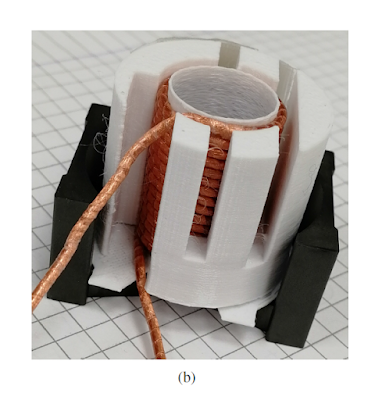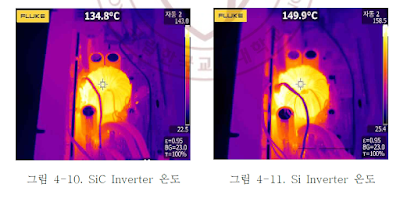domingo, 30 de agosto de 2020
Design and implementation of a GaN based dual active bridge converter for electric vehicle charger-CANDIDATE: Marco Giacomazzo-INDUSTRIAL ENGINEERING DEPARTMENT Master’s degree in Electrical Energy Engineering-University of Padua
sexta-feira, 28 de agosto de 2020
A Study on the Efficiency Improvement of Inverter for Automotive using SiC MOSFET SiC MOSFET를 이용한 차량용 INVERTER 효율 향상에 관한 연구--KOREA NATIONAL UNIVERSITY OF TRANSPORTATION
A Study on the Efficiency Improvement of Inverter for Automotive using SiC MOSFET
In this paper, we measured the loss of conduction, switching loss, efficiency characteristics, and the temperature of the main parts for Si / SiC MOSFET. In the conduction loss experiment, the loss value of SiC MOSFET compared to Si MOSFET for one cycle is approximately 61.3(%). The switching loss experiment showed that SiC MOSFET losses were small, with about 49.6(%) at Turn-on and approximately 49.2(%) at Turn-off against Si MOSFET. This was immediately confirmed to be low temperature in each part of the inverter. In particular, it was found that the temperature difference at the transformer core with the highest temperature varies from the load of 600(W) to 15.1(°C). In the experiment of efficiency characteristics, the maximum efficiency of 93.5(%) was obtained, and the efficiency improvement of up to 2.8(%) compared to the inverter with Si MOSFET was achieved. The temperature measurement test also shows that most parts temperature is low in the inverter employing SiC MOSFET. The application of SiC MOSFET to the efficiency of inverter was proved to be reasonable as the performance of inverter with SiC
quarta-feira, 19 de agosto de 2020
공동주택에 적용한 계통연계형 태양광발전시스템의 보호방식에 관한 연구 A Study on the Protection Method of the Grid-Connected Photovoltaic Power Generation System Applied to Apartments-GeunYub Lee- Dept. of Electrical Eng. The Graduate School Korea University
MANUAL DE ENGENHARIA PARA SISTEMAS FOTOVOLTAICOS-JOÃO TAVARES PINTO-MARCO ANTONIO GALDINO-GRUPO DE TRABALHO DE ENERGIA SOLAR-GTES-CEPEL-DTE-CRESESB
MANUAL DE ENGENHARIA PARA SISTEMAS FOTOVOLTAICOS-JOÃO TAVARES PINTO-MARCO ANTONIO GALDINO-GRUPO DE TRABALHO DE ENERGIA SOLAR-GTES-CEPEL-DTE-CRESESB
segunda-feira, 17 de agosto de 2020
Control Architecture for Parallel Inverter in Uninterruptible Power Systems Chi Zhang, Student Member, IEEE, Josep M. Guerrero, Fellow, IEEE, Juan C. Vasquez, Senior Member, IEEE, Ernane A.A. Coelho, Member, IEEE
Abstract— In this paper, a control strategy for the parallel operation of three-phase inverters forming an online uninterruptible power system (UPS) is presented. The UPS system consists of a cluster of paralleled inverters with LC filters directly connected to an AC critical bus and an AC/DC forming a DC bus. The proposed control scheme comprises two layers: (i) a local layer that contains a “reactive power-to-phase droop” in order to synchronize the phase angle of each inverter and a virtual resistance loop that guarantees equal power sharing among inverters; and (ii) a central controller that guarantees synchronization with an external real/fictitious utility, and critical bus voltage amplitude restoration. Improved transient and steady-state frequency, active, reactive and harmonic power sharing, and global phase-locked loop resynchronization capability are achieved. Detailed system topology and control architecture are presented in this paper. Further, a mathematical model was derived in order to analyze critical parameters effects on system stability. The proposed control approach has been validated by means of experimental results obtained for several case-study scenarios. Index Terms— UPS system; parallel inverters; voltage restoration; droop control; virtual impedance























































 JOSIL ARTISTA PLASTICO FORTALEZA CEARA BRASIL AV.HERACLITO GRAÇA 41 TEL(85)32542378
JOSIL ARTISTA PLASTICO FORTALEZA CEARA BRASIL AV.HERACLITO GRAÇA 41 TEL(85)32542378
















